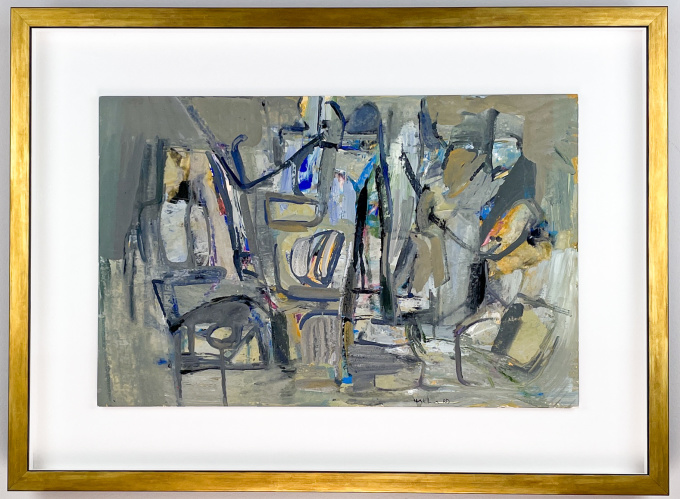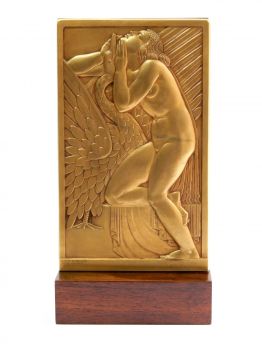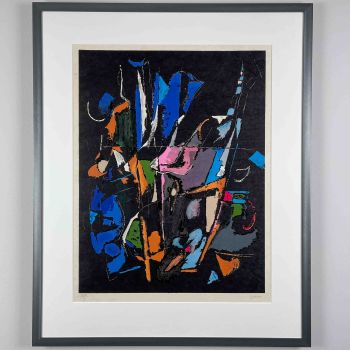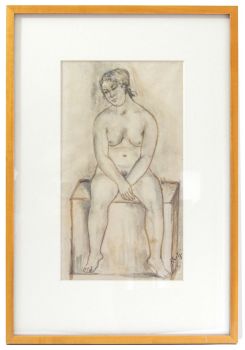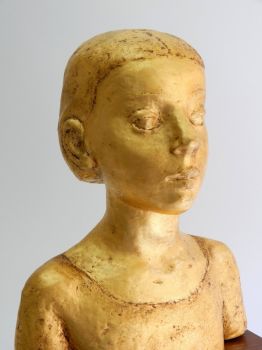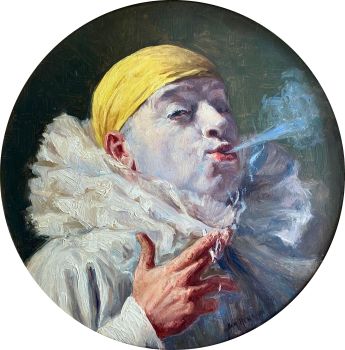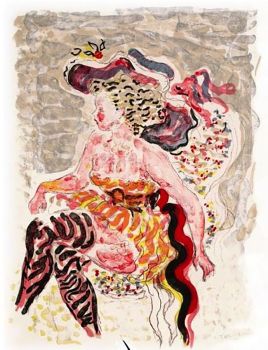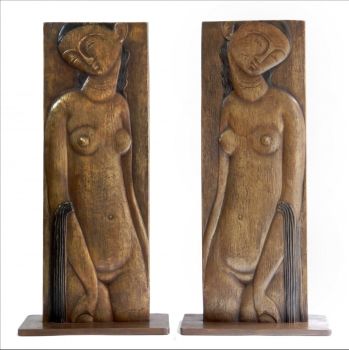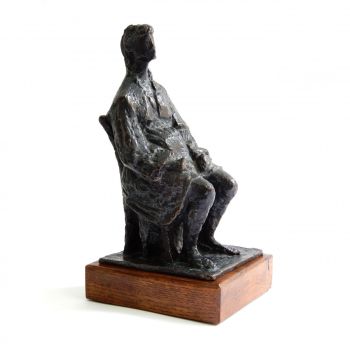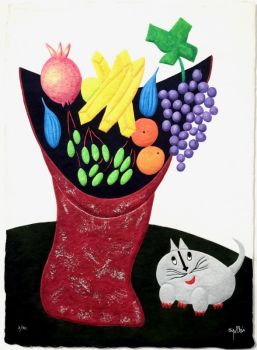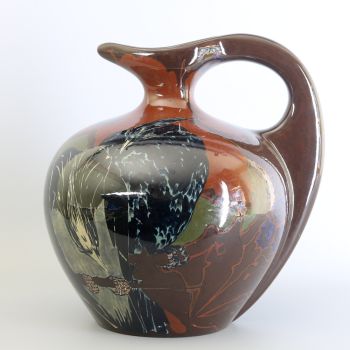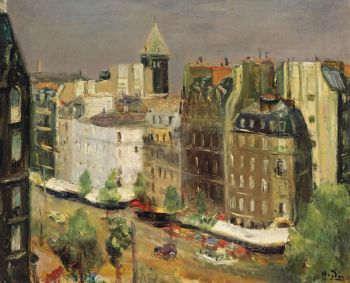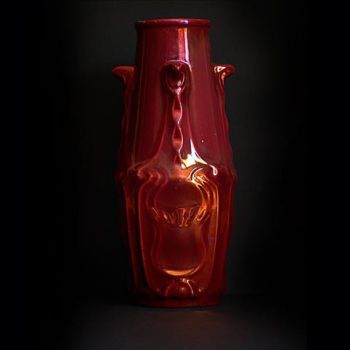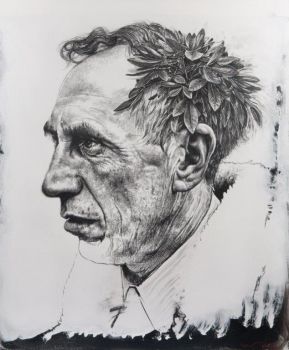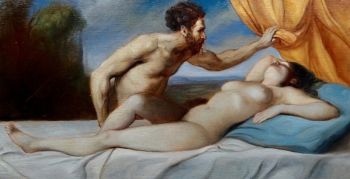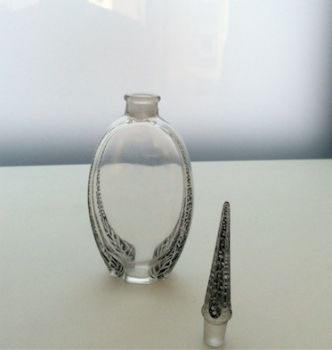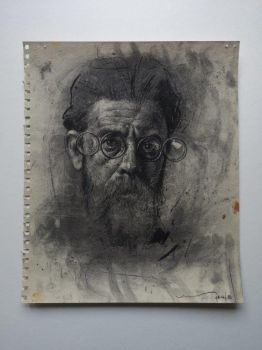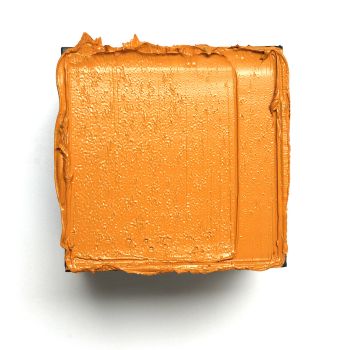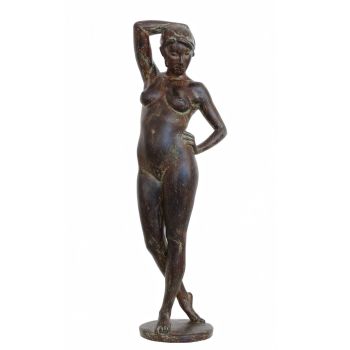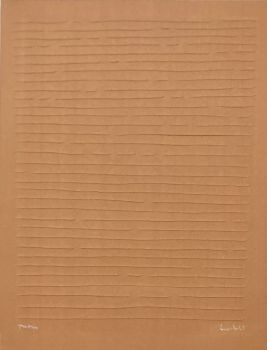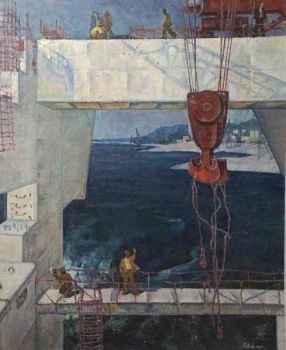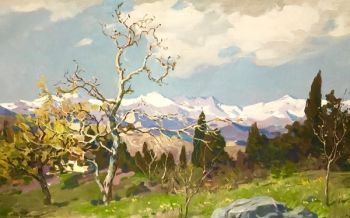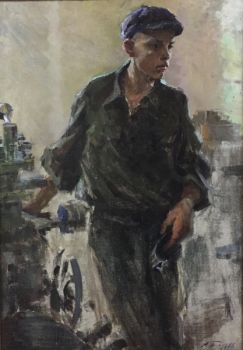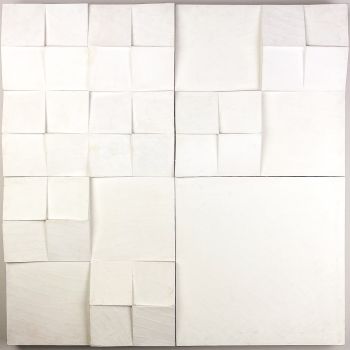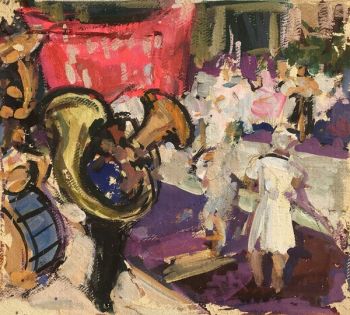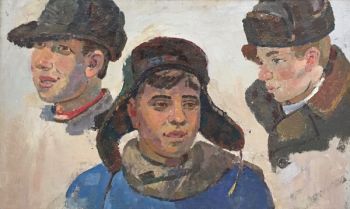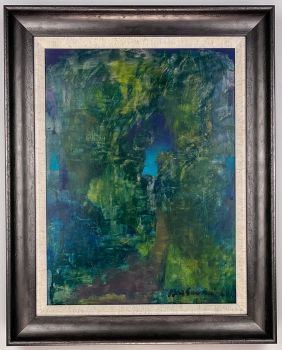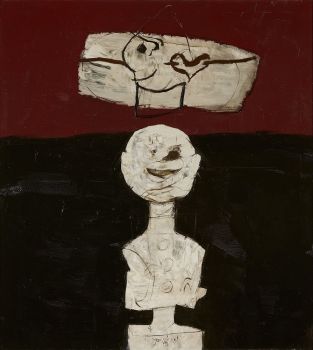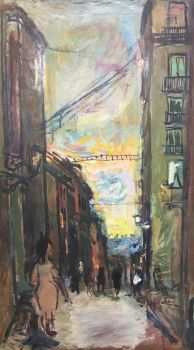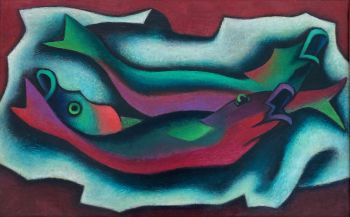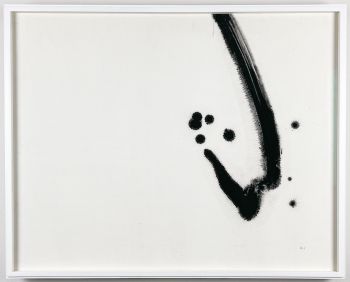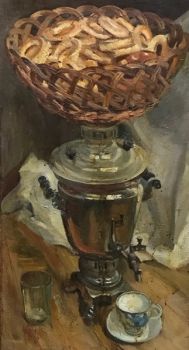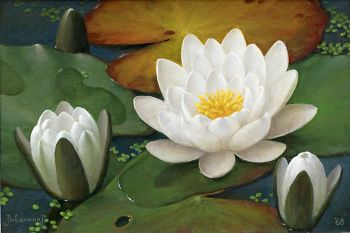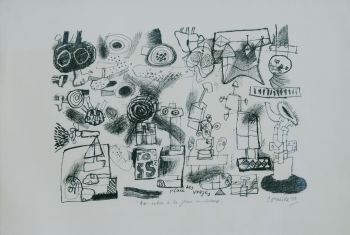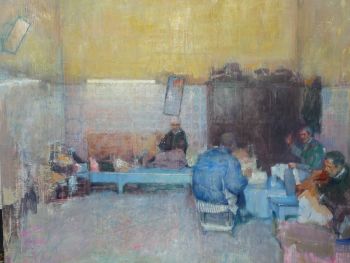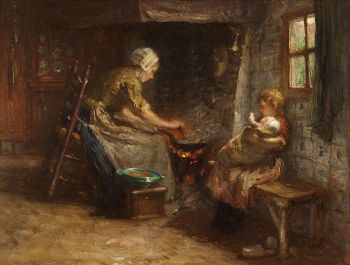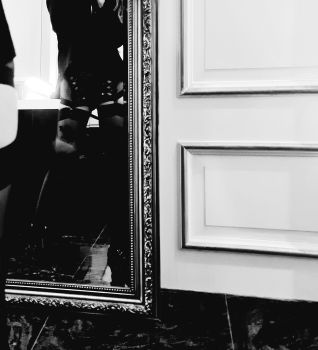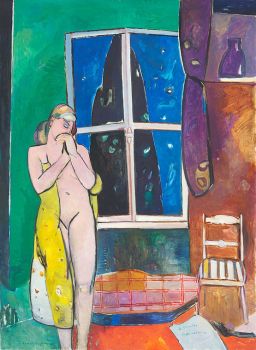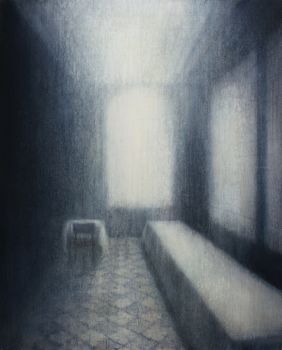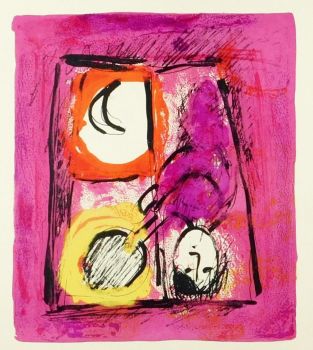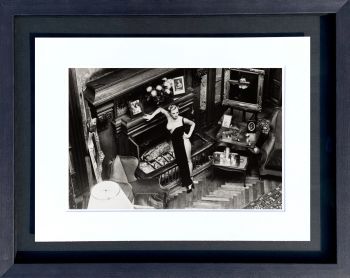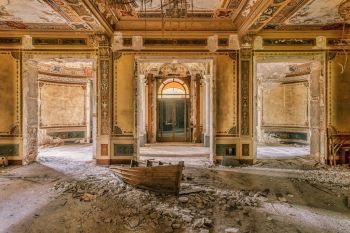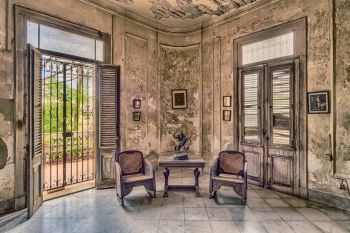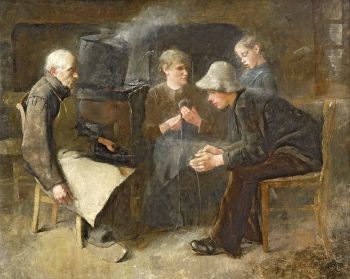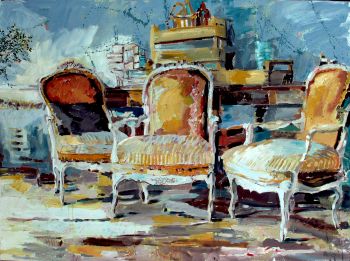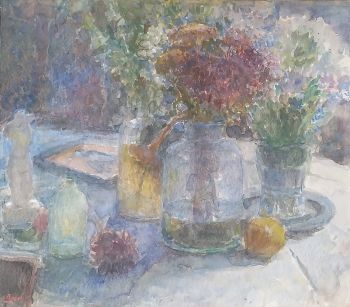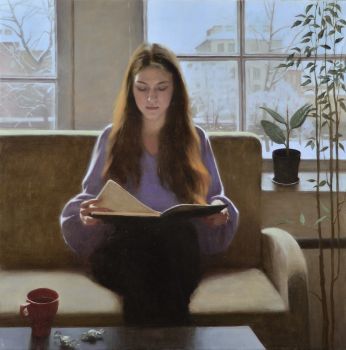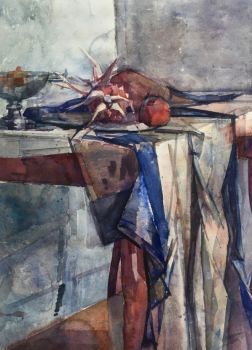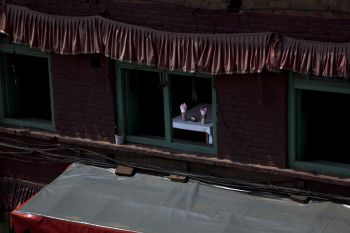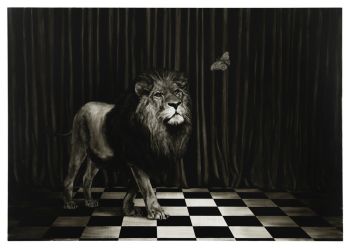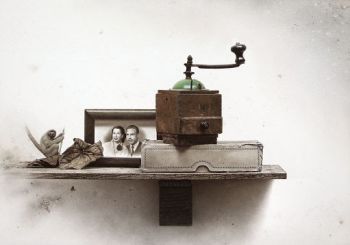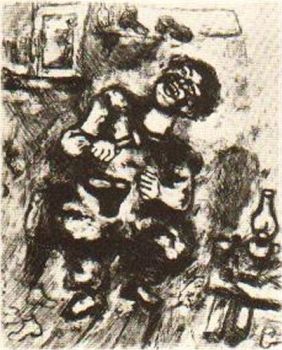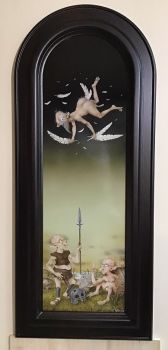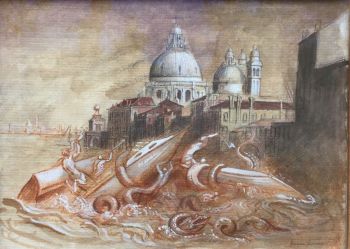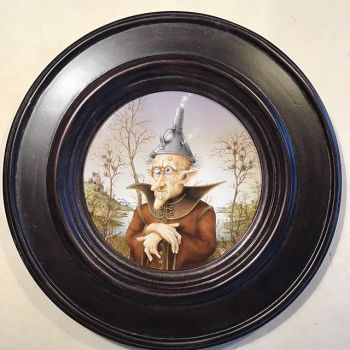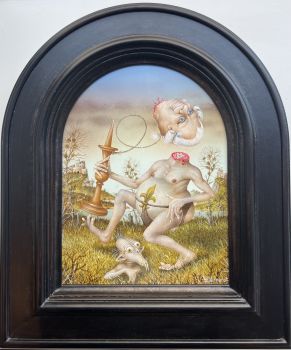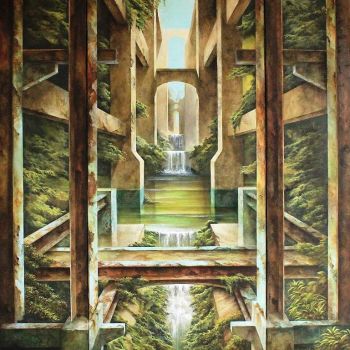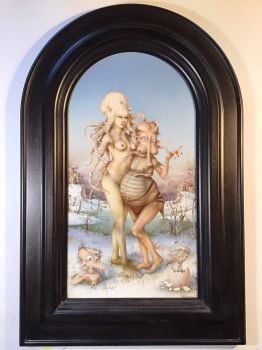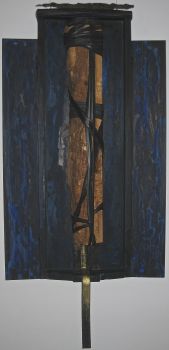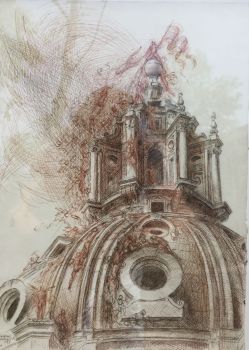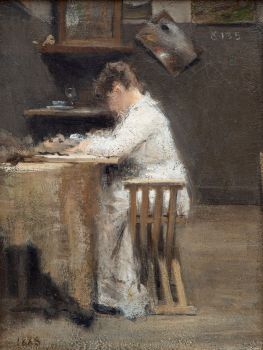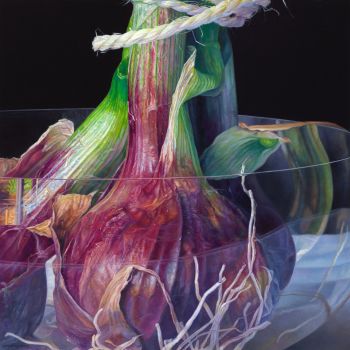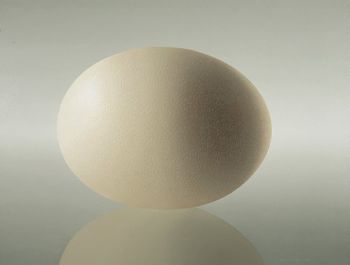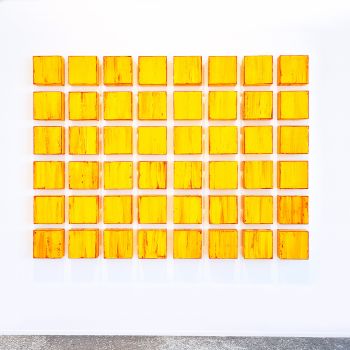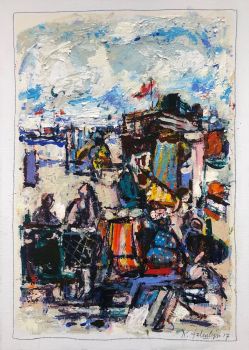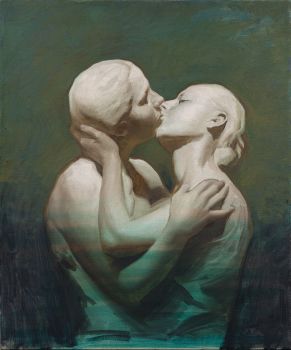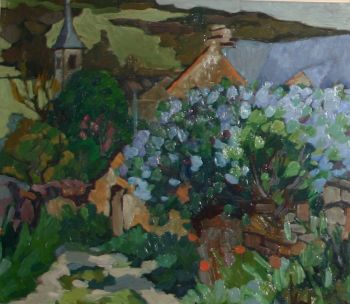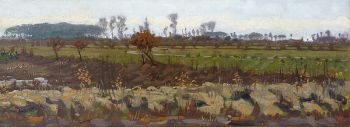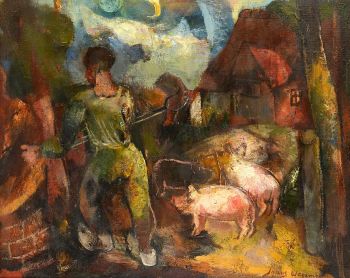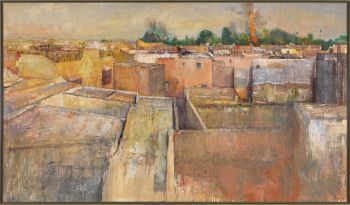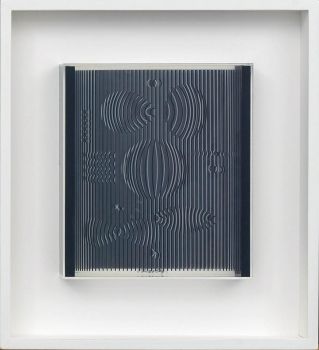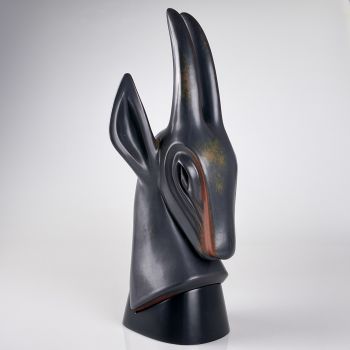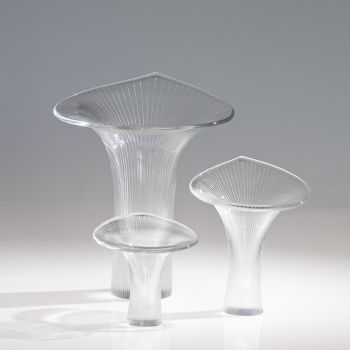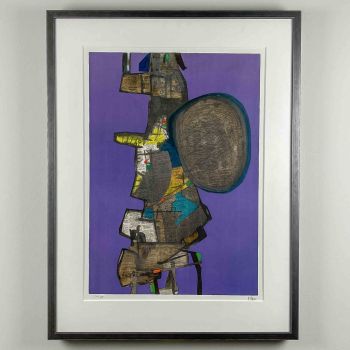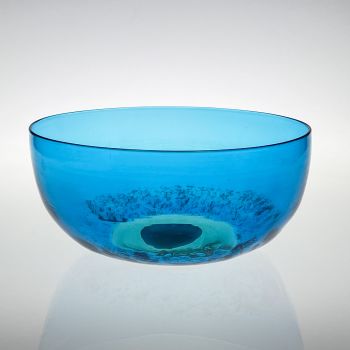“Interior”, circa 1955 – Tempera on cardboard 1950 - 1959
Louis Nallard
TêmperaPintar
49 ⨯ 66 ⨯ 4 cm
ConditionVery good
€ 2.250
Van Kerkhoff Art
- Sobre arteOriginal artwork by French painter Louis Nallard. In this abstracted Interior the artist blends grey and earthtones with strokes of vibrant blues, orange and green. Signed by the artist, right bottom corner.
About the artist
Louis Nallard (Algiers 1918 – Paris 2016) was a French non-figurative painter of the Nouvelle École de Paris.
Born on June 17, 1918, in Algiers, French Algeria, had a life intertwined with art and creativity. Despite facing early hardships with the loss of his mother to the Spanish flu, Nallard found solace in his ancestral landscapes. Every summer, he returned to the Dombes region, his father’s birthplace, which became a wellspring of inspiration for his artistic endeavors.
At the tender age of sixteen, in 1934, Nallard unveiled his debut exhibition featuring portraits and landscapes, showcasing his skills in watercolors and gouaches. The exhibition took place at the gallery owned by Thomas Rouault, the nephew of the renowned painter.
In 1941, Nallard enrolled at the Beaux-arts in Algiers, where he encountered fellow artists such as Marcel Fiorini and Robert Lavergne. Lavergne later became his introducer at the prestigious Galerie Jeanne Bucher. During this time, Nallard also met Maria Manton, whom he married in 1944. Additionally, he formed a lasting friendship with the painter Georges Ladrey, who shared his fascination with the work of Pierre Bonnard.
In 1947, Louis Nallard and Maria Manton departed Algiers, accompanied by Fiorini, and relocated to the Paris region. This relocation marked a turning point as they discovered the artistry of Bissière and forged friendships with him and Chastel. From 1948 onwards, Nallard actively participated in group exhibitions at renowned venues such as the Salon des Réalités Nouvelles and the Salon de Mai. Moreover, he established significant connections with the Galerie Jeanne Bucher, which consistently exhibited his paintings from 1948 onwards.
Establishing themselves in the heart of Paris, Nallard and Maria Manton assumed management of the Hôtel du Vieux-Colombier near Saint-Germain-des-Prés in 1950. The hotel became a vibrant hub frequented by artists after their exhibitions. Noteworthy figures such as Serge Poliakoff, who earned a living playing the balalaika in Russian restaurants, Herman Braun-Vega, a recent arrival from Peru, Sidney Bechet, Robert Hossein, the sculptor César, and writers Jean Sénac and Kateb Yacine, occupied its premises. In 1950, Nallard’s talent was recognized when he received the prestigious Prix Fénéon. Three years later, Nallard and Maria Manton exhibited their works in Algiers alongside Jean Sénac, Baya, Bouqueton, and Jean de Maisonseul. Additionally, Robert Martin’s “Colline” gallery in Oran organized an exhibition that showcased Nallard’s paintings alongside those of Bouqueton. It was during this time that Albert Camus took notice of Nallard’s captivating artwork.
The Galerie Jeanne Bucher held its inaugural exhibition of Nallard’s works in 1957, marking the beginning of a longstanding partnership. The following year, Nallard was among the “Sixteen painters of the young Paris school” featured in the Musée de Poche collection, with a preface by Hubert Juin. Throughout the 1950s, Nallard and Maria Manton fostered connections with Algerian painters, including Guermaz, Issiakhem, and Khadda, and developed a special bond with Benanteur and Aksouh. In 1963, Nallard participated in the “Algerian Painters” exhibition organized in Algiers. The following year, his artwork was showcased at the Musée des Arts Décoratifs in Paris.
In the 1960s, Nallard and Maria Manton embarked on a new venture, running “La Galerie” where they provided a platform for young painters. They also played an instrumental role in the Salon des Réalités Nouvelles, with Maria Manton serving as the general secretary from 1961 to 1995 and Louis Nallard assuming positions as vice-president and later honorary president. As Nallard’s exhibitions continued to captivate audiences both in France and abroad, he joined the École des Beaux-Arts in 1975 as a teacher, a role he held until 1983. Today, Nallard’s remarkable artistic legacy is represented in numerous prestigious museums worldwide, including those in Paris, Grenoble, Algiers, Amsterdam, Budapest, Montreal, Oslo, and Turin.
Signed
Signed front, right lower corner: Nallard
Condition
Good original condition, professionally framed
Provenance
Galerie Blanche, Stockholm
Dimensions
Artwork
Height 31,5 cm
Width 49 cm
Frame
Height 49,5 cm
Width 66,8 cm
Depth 4 cm - Sobre artista
Em 1934, com a tenra idade de 16 anos, Louis Nallard revelou ao público pela primeira vez as suas criações artísticas na Galeria/Livraria Thomas Rouault. Isso marcou o início de uma jornada promissora no mundo da arte.
Durante seu período como estudante na École des Beaux-Arts de Argel, em 1940, o destino o colocou na companhia de figuras notáveis como Fiorini, Bouqueton, Maria Manton e Bernard Lavergne. Mal sabia ele que estes encontros casuais desempenhariam um papel fundamental na formação do seu destino artístico. Somente em 1949 essas conexões o levariam ao influente Jean-François Jaeger.
Louis Nallard já tinha captado o olhar perspicaz de Max-Pol Fouchet durante uma exposição em Argel em 1941, prenunciando o reconhecimento e a aclamação que se seguiriam. Em 1947, Nallard tomou a decisão que mudou sua vida de deixar a Argélia para trás e se mudar para o movimentado centro artístico de Paris. Este movimento crucial marcou uma viragem na sua evolução artística.
Seu estilo artístico passou por uma transformação à medida que ele se adaptava ao vibrante cenário artístico parisiense. Uma nova seriedade permeou sua paleta e suas formas adquiriram uma qualidade mais fragmentada e abstrata. Esta mudança significativa não passou despercebida e, no devido tempo, foi galardoado com o prestigiado prémio "La Bataille" na conceituada Galeria Drouant-David.
O ano de 1947 também marcou outro momento crucial na jornada de Nallard, quando encontrou as influentes obras de Bissière na Galeria Drouin. Este encontro com a obra de Bissière deixou uma marca indelével no desenvolvimento artístico de Nallard.
Pouco depois de sua chegada a Paris, Louis Nallard cruzou o caminho do mentor esclarecido Roger Chastel. Chastel, ganhador do Grand Prix National des Arts em 1932 e professor da prestigiada Ecole Nationale Supérieure des Beaux-Arts de Paris, tornou-se uma influência orientadora na jornada artística de Nallard. Sob a tutela de Chastel, a arte de Nallard continuou a florescer e a evoluir, solidificando o seu lugar nos anais da história da arte.
Você está interessado em comprar esta obra de arte?
Artwork details
Related artworks
- 1 - 4 / 24
- 1 - 4 / 24
Bernardus Johannes Blommers
Het bereiden van de maaltijd1870 - 1914
Preço em pedidoStudio 2000 Art Gallery
1 - 4 / 24- 1 - 4 / 24
Victor Vasarely
"Venus", multiple 1987 - professionally framed, museumglass1987
€ 3.700Van Kerkhoff Art
 Com curadoria de
Com curadoria deDanny Bree
1 - 4 / 12

